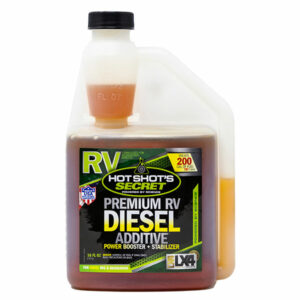
A fuel rail pressure sensor monitors the diesel engine’s fuel rail pressure. It measures the fuel pressure and sends data to the engine control unit (ECU).
This guide will cover fuel rail pressure sensors, including their locations and maintenance.
What Is a Fuel Rail Pressure Sensor?
A diesel engine relies on working components to send the correct amount of fuel into the combustion chamber. If one or more parts are not working properly, you may experience engine malfunctions or decreased fuel efficiency.
Also known as a high-pressure sensor, the fuel pressure sensor for diesel engines monitors the fuel rail’s interior pressure. The rail is a cylindrical or rectangular metal tube connecting the engine and the fuel system. Fuel goes through the tube, and the electric sensor’s pressure measurements signal the powertrain control module.
It is important to maintain proper fuel pressure to allow for smooth performance and optimal power. If the pressure is too high or too low, it can lead to a range of problems hindering your vehicle’s operations.
Fuel Rail Pressure Sensor Location
The fuel rail pressure sensor is located somewhere on the outside of your diesel engine. It is typically positioned opposite the pressure control valve on the fuel rail. The rail is only a few inches long.
The exact fuel pressure sensor location can differ according to your vehicle’s make and model. A Ford Powerstroke’s fuel rail pressure sensor is found on the cylinder head on the driver’s side. In a 2016 Chevy truck, the sensor is located on the passenger-side fuel rail beneath the L5P Duramax engine’s EGR cooler.
Common Issues With Fuel Rail Pressure Sensors
Although fuel rail pressure sensors are designed to last for your vehicle’s whole lifetime, it is possible for them to show symptoms of failure earlier on. This malfunction can make it difficult to start your engine and keep it running. Warning signs that there is a problem with the fuel rail pressure sensor include:
- Illuminated check engine light: When the engine does not receive the correct amount of fuel, the ECM will detect the abnormal sensor input and alert you via the check engine light.
- Stalling or misfiring engine: The wrong amount of fuel may make your engine run rough and feel sluggish when accelerating. Misfires occur due to incomplete engine combustion.
- Decreased fuel economy: If your vehicle uses more fuel to travel a given distance than it normally does, the pressure readings might be inaccurate.
A sensor may malfunction due to wear, heat or moisture damage. Increased wear or an accident can impair components of your engine. Corrosion and rusting from weather conditions can lead to inaccurate readings.
An engine running on an incorrect amount of fuel cannot perform at its maximum capacity, so replace the faulty sensor as soon as possible.
Maintenance and Troubleshooting
A faulty sensor can affect engine performance and your ability to safely drive the vehicle. Consider checking the fuel rail pressure sensor as part of your vehicle’s routine maintenance to help catch issues early on. If you notice problems, you can:
- Maintain the fuel quality and filters: Contaminated fuel can build up in your engine, resulting in inaccurate readings. Use high-quality fuel and regularly replace the filter to avoid clogs. To maintain the fuel system, occasionally use an injector cleaner additive to maintain optimal pressure and clean the fuel system.
- Troubleshoot your sensor with a scanner: Try using a scanner to identify any relevant diagnostic trouble codes (DTCs) that will confirm the cause.
- Test the sensor’s electrical resistance: A multimeter is a versatile testing tool that detects voltage, current and resistance. No continuity means the sensor is faulty.
After confirming that your fuel rail pressure sensor has gone bad, it is time to replace it. This process involves removing the existing fuel, disconnecting wires and vacuum hoses and replacing the sensor with a new one. The new sensor will be tightened to the manufacturer’s specified torque value. You will also need to check for leaking fuel, which can indicate that the new sensor isn’t fully attached.
Professional troubleshooting is recommended for the most efficient diagnostics and the best results.
Frequently Asked Questions
When you have questions, Hot Shot’s Secret has the answers.
Can You Teach Me How to Reset Fuel Rail Pressure Sensor Readings?
Clear the readings with a scanner tool. Also, try disconnecting and reconnecting the battery for a reset.
Are There Any Other Signs of a Bad Fuel Rail Pressure Sensor?
As covered above, a faulty fuel rail pressure sensor may have several symptoms. It is unlikely that this component will fail without warning. In addition to the check engine light, difficult starts, misfiring, reduced fuel economy and decreased engine performance, signs may include fuel leakage.
Hot Shot’s Secret’s Tools for Diesel Engines
For optimal performance and fuel efficiency, maintain your fuel pressure sensor for diesel engines.
Hot Shot’s Secret carries tools that can help, such as our concentrated Diesel Extreme additive for removing contaminants and boosting stability, Everyday Diesel Treat to power and protect your diesel fuel system and a Fuel Analysis kit to examine the fuel quality. Check out these products and other carefully formulated options to improve your engine’s health.



